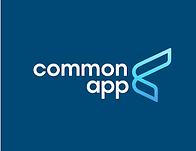Common App
Common App is an online application platform that is used by most schools you will be applying to. It allows you to fill out one main application and send it to multiple schools, which saves time and helps you stay organized
Starting Out
To start the application process, start by creating a Common App account at commonapp.org. Make sure you use your personal email not a school-affiliated one. Once the account is set up, you will enter basic information like your name, address, school details and family background. After that, go to the “College Search” tab to find and add the schools that you are interested in. Each college will then show up on your dashboard, where you can then complete their specific requirements.
In the activities section, you are able to list up to 10 extracurriculars, such as clubs, sports, jobs, volunteering, etc. Each entry has a short character limit, so be sure to focus on leadership, commitment, and the impact you made. The Writing section includes your main personal essay, where you will choose from seven prompts. Many colleges also have additional short-answer or supplemental essays.
Deadlines
Finally, keep track of your deadlines. Early action and Early decision applications are typically due in October or November, while regular decision deadlines are around December or January. Some schools offer Rolling admission, which means they review applications as they come in. Staying organzied and starting early makes a big difference, so make sure to give yourself plenty of time to complete each section.

What Common App Includes
Common App is divided into different key sections. In the profile tab, you will fill out personal details such as citizenship, and contact information. The education section asks for your high school, GPA, class rank, courses you’ve taken, and honors you have received. If you want to report test scores (SAT, ACT, AP, etc) you will put this in the testing section.
Recommendation Letters
Most schools require recommendation letters, usually one from your college counselor, and one-two from core subject teachers, preferably from junior year. Ask them in person first, then if they agree, officially invite them through the “Recommenders and FERPA” section of each college’s tab. Be sure to waive your right to view the letters.
Application Type Typical Deadline Key Details
Early Action (EA) Oct-Nov Apply early, get results early (non-binding)
Early Decision (ED) Oct-Nov Binding—you must attend if accepted
Regular Decision (RD) Dec-Jan Most common deadline type
Rolling Admission Varies Decisions made as applications are received